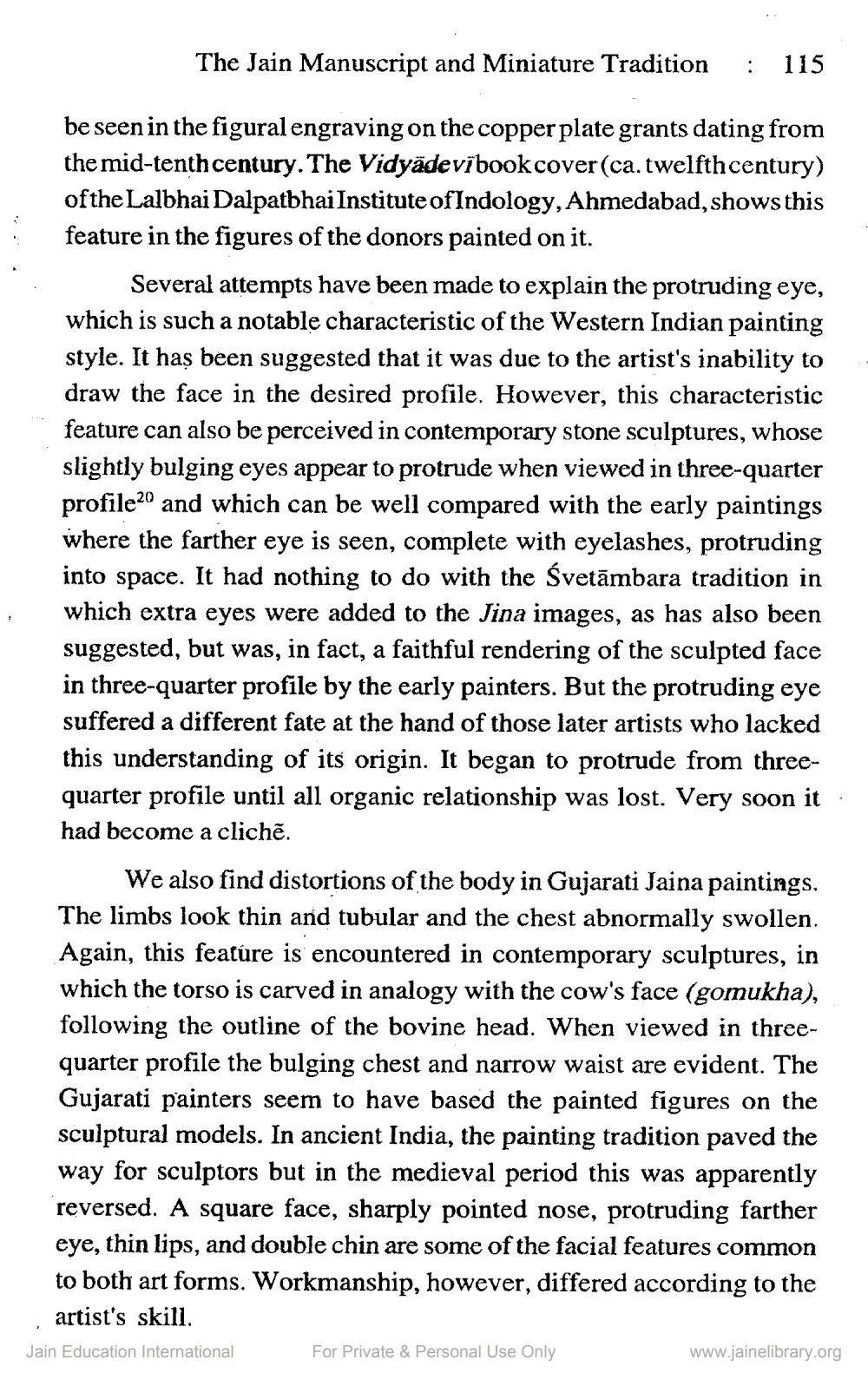________________
The Jain Manuscript and Miniature Tradition
: 115
be seen in the figural engraving on the copper plate grants dating from the mid-tenth century. The Vidyādevībook cover(ca. twelfth century) of the Lalbhai Dalpatbhai Institute of Indology, Ahmedabad, shows this feature in the figures of the donors painted on it.
Several attempts have been made to explain the protruding eye, which is such a notable characteristic of the Western Indian painting style. It has been suggested that it was due to the artist's inability to draw the face in the desired profile. However, this characteristic feature can also be perceived in contemporary stone sculptures, whose slightly bulging eyes appear to protrude when viewed in three-quarter profile20 and which can be well compared with the early paintings where the farther eye is seen, complete with eyelashes, protruding into space. It had nothing to do with the Svetāmbara tradition in which extra eyes were added to the Jina images, as has also been suggested, but was, in fact, a faithful rendering of the sculpted face in three-quarter profile by the early painters. But the protruding eye suffered a different fate at the hand of those later artists who lacked this understanding of its origin. It began to protrude from threequarter profile until all organic relationship was lost. Very soon it. had become a clichê.
We also find distortions of the body in Gujarati Jaina paintings. The limbs look thin and tubular and the chest abnormally swollen. Again, this feature is encountered in contemporary sculptures, in which the torso is carved in analogy with the cow's face (gomukha), following the outline of the bovine head. When viewed in threequarter profile the bulging chest and narrow waist are evident. The Gujarati painters seem to have based the painted figures on the sculptural models. In ancient India, the painting tradition paved the way for sculptors but in the medieval period this was apparently reversed. A square face, sharply pointed nose, protruding farther eye, thin lips, and double chin are some of the facial features common to both art forms. Workmanship, however, differed according to the
artist's skill. Jain Education International For Private & Personal Use Only
www.jainelibrary.org




